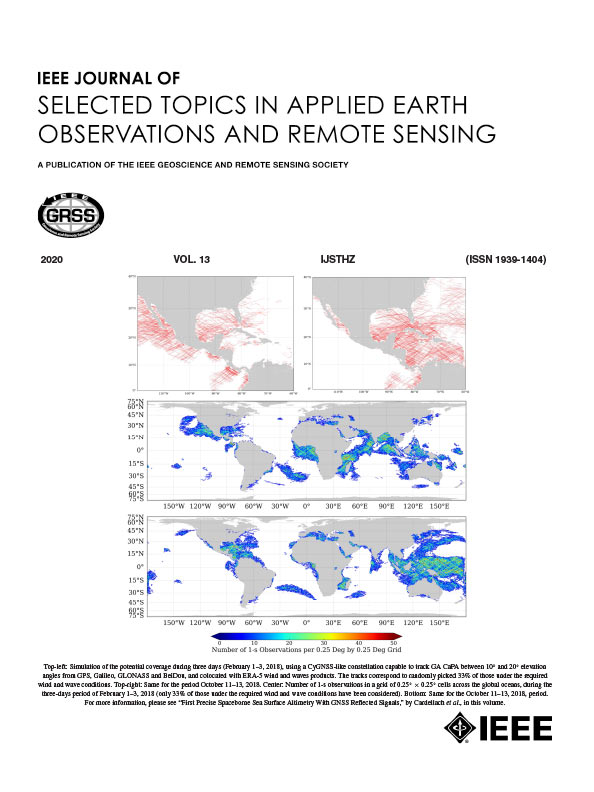An Investigation of Systematic Bias in ALOS-2 Multilooked Interferograms
IF 5.3
2区 地球科学
Q1 ENGINEERING, ELECTRICAL & ELECTRONIC
IEEE Journal of Selected Topics in Applied Earth Observations and Remote Sensing
Pub Date : 2025-10-02
DOI:10.1109/JSTARS.2025.3617173
引用次数: 0
Abstract
Interferometric synthetic aperture radar (SAR) measurements are affected by systematic bias, referred to as “fading signal,” when explicitly using temporally short-term and spatially multilooked interferograms. Investigations using extensive time-series data from the Sentinel-1ALOS-2多视点干涉图系统偏置的研究
干涉合成孔径雷达(SAR)测量受到系统偏差的影响,即“衰落信号”,当明确使用时间短期和空间多视干涉图时。利用Sentinel-1 c波段SAR的大量时间序列数据进行的调查发现,土壤湿度和生物量变化是观测到的偏差的潜在原因。虽然相位偏差应该随着波长的增加而增加,但由于数据分布政策的限制,对先进陆地观测卫星-2 (ALOS-2) l波段SAR观测到的偏差的详细研究受到限制。因此,我们在5年的观测中研究了不同干涉对和土地覆盖类型的ALOS-2多视点干涉图的系统偏差。关于土壤湿度正、负变化的偏差行为,我们的结果与使用土壤湿度干涉模型进行的模拟结果一致。观察到的偏差为40毫米/年,平均时间基线为72天。我们的研究表明,利用l波段SAR观测到的偏差可以归因于土壤水分和生物量的变化。此外,我们开发了一种方法来减轻ALOS-2多面干涉图中的系统偏差。该方法利用了我们的研究结果,即Pepe等人(2015)提出的噪声滤波技术可以通过利用中期干涉图和冗余三元组来克服这些偏差,而不管土地覆盖类型如何。
本文章由计算机程序翻译,如有差异,请以英文原文为准。
求助全文
约1分钟内获得全文
求助全文
来源期刊
CiteScore
9.30
自引率
10.90%
发文量
563
审稿时长
4.7 months
期刊介绍:
The IEEE Journal of Selected Topics in Applied Earth Observations and Remote Sensing addresses the growing field of applications in Earth observations and remote sensing, and also provides a venue for the rapidly expanding special issues that are being sponsored by the IEEE Geosciences and Remote Sensing Society. The journal draws upon the experience of the highly successful “IEEE Transactions on Geoscience and Remote Sensing” and provide a complementary medium for the wide range of topics in applied earth observations. The ‘Applications’ areas encompasses the societal benefit areas of the Global Earth Observations Systems of Systems (GEOSS) program. Through deliberations over two years, ministers from 50 countries agreed to identify nine areas where Earth observation could positively impact the quality of life and health of their respective countries. Some of these are areas not traditionally addressed in the IEEE context. These include biodiversity, health and climate. Yet it is the skill sets of IEEE members, in areas such as observations, communications, computers, signal processing, standards and ocean engineering, that form the technical underpinnings of GEOSS. Thus, the Journal attracts a broad range of interests that serves both present members in new ways and expands the IEEE visibility into new areas.

 求助内容:
求助内容: 应助结果提醒方式:
应助结果提醒方式:


